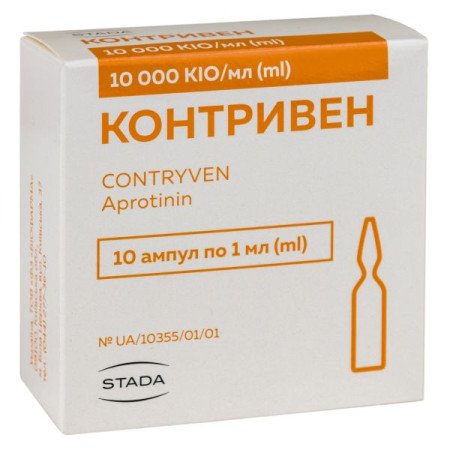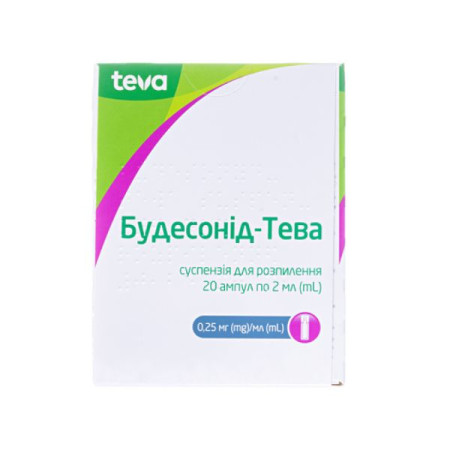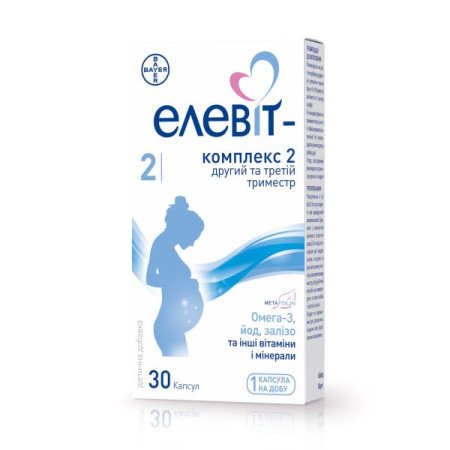Fluanxol Depot oily solution for injection 20 mg/ml ampoule 1 ml No. 10

Instructions Fluanxol Depot oily solution for injection 20 mg/ml ampoule 1 ml No. 10
Composition
active ingredient: flupentixol;
1 ml of solution for injection contains 20 mg of cis(Z)-flupentixol decanoate;
excipients: medium chain triglycerides.
Dosage form
Solution for injection.
Main physicochemical properties: transparent, colorless to slightly yellowish oily solution, almost free from mechanical inclusions.
Pharmacotherapeutic group
Psycholeptics. Antipsychotics. Thioxanthene derivatives. Flupentixol.
ATX code N05A F01.
Pharmacological properties
Pharmacodynamics.
Flupentixol is a neuroleptic from the thioxanthene group.
The antipsychotic effect of neuroleptics is associated with the blockade of dopamine receptors, as well as the possible involvement of 5HT receptor blockade. In vitro and in vivo, flupentixol has a high affinity for both dopamine D1 and D2 receptors. The atypical antipsychotic clozapine has a similar affinity for D1 and D2 receptors in vitro and in vivo.
Flupentixol has a high affinity for α1-adrenoceptors and 5HT2-receptors, although somewhat lower than chlorprothixene, high-dose phenothiazines, and clozapine, but has no affinity for cholinergic muscarinic receptors. It has weak antihistaminergic properties and does not block α2-adrenoceptors.
Flupentixol is a potent neuroleptic, as demonstrated by all behavioral studies of neuroleptic activity (dopamine receptor blocking ability). At average daily dosages and oral use for antipsychotic treatment, affinity for the dopamine D2 receptor binding sites is observed in in vitro and in vivo models.
Perioral movements in rats are dependent on D1 receptor stimulation or D2 receptor blockade. Movements can be prevented by flupentixol. Similarly, studies in monkeys indicate that oral hyperkinesia is more likely to be associated with D1 receptor stimulation and less likely with D2 receptor hypersensitivity. This suggests that D1 activation is responsible for the development of a similar effect in humans, i.e., the development of dyskinesia. Thus, D1 receptor blockade should be beneficial in preventing the development of dyskinesia in humans.
Like most other neuroleptics, flupentixol increases serum prolactin levels.
Pharmacological studies have clearly demonstrated that the oily solution of flupentixol decanoate exhibits a long-lasting neuroleptic effect, and the amount of drug required to maintain a constant effect over a long period is significantly less when using the depot preparation than when using daily oral flupentixol.
A very modest and short-term increase in barbiturate-induced sleep time in mice could only be demonstrated at high doses. Therefore, it is unlikely that any significant interaction with anesthetics will occur in patients receiving depot preparation.
Clinical efficacy and safety
The clinical use of flupentixol decanoate is for the maintenance treatment of chronic psychoses. The antipsychotic effect increases with increasing dose. In the low and medium dose range (up to 100 mg/2 weeks), flupentixol decanoate does not show a sedative effect, while some non-specific sedative reaction can be expected at higher doses.
Flupentixol decanoate is particularly effective in treating patients with apathy, loneliness, depression, and lack of motivation.
Flupentixol decanoate provides the possibility of continuous treatment, which is extremely important for patients who do not follow the doctor's instructions. Flupentixol decanoate thus prevents the development of frequent relapses associated with patients interrupting the intake of oral medications.
Pharmacokinetics.
Absorption.
As a result of esterification with decanoic acid, flupentixol is converted into the highly lipophilic substance flupentixol decanoate. After administration of flupentixol decanoate is enzymatically cleaved into the active component cis(Z)-flupentixol and decanoic acid. The maximum concentration of flupentixol in the blood serum is reached at the end of the first week after injection. The half-life is 3 weeks (reflects release from the depot), equilibrium concentrations are established with repeated administration for 3 months.
Distribution.
The apparent volume of distribution (Vd)β is approximately 14.1 l/kg.
Biotransformation.
The metabolism of flupentixol occurs via three main pathways: sulfoxidation, N-dealkylation of the side chain, and conjugation with glucuronic acid. The metabolites have no psychopharmacological activity. The pharmacological action of unmetabolized zuclopenthixol prevails over the effects of its metabolites on the brain and other tissues due to the fact that the metabolites of zuclopenthixol have no neuroleptic activity.
The elimination half-life (T1/2β) of cis(Z)-flupentixol is approximately 35 hours and the systemic clearance (Cls) is approximately 0.29 l/min.
Flupentixol is excreted primarily in the feces, but also to some extent in the urine. When tritiated flupentixol was administered to humans, its excretion in the feces was approximately 4 times greater than its excretion in the urine.
Flupentixol passes into breast milk in small amounts. In women, the milk to serum concentration ratio is on average 1.3.
Linearity.
The kinetics are linear. The steady-state mean serum flupentixol level before the next administration of flupentixol decanoate at a dose of 40 mg every two weeks is 6 nmol/l.
Pharmacokinetic studies in elderly patients have not been conducted. However, the pharmacokinetic parameters of a related thioxanthene drug, zuclopenthixol, are largely independent of patient age.
In case of impaired renal function, a significant effect on the concentration of the drug in blood plasma is not expected.
There are no data on the effect of liver dysfunction on the pharmacokinetic parameters of the drug.
Pharmacokinetic and pharmacodynamic interactions
A pre-injection serum (plasma) concentration of 1–3 ng/mL (2–8 nmol/L) and a peak/trough fluctuation of <2.5 is suggested as recommended for maintenance treatment of patients with mild to moderate schizophrenia.
Pharmacokinetically, a dose of flupentixol decanoate 40 mg/2 weeks is equivalent to a daily oral dose of 10 mg flupentixol.
Indication
Supportive treatment of schizophrenia and other psychoses, especially with symptoms such as hallucinations, delusions and thought disorders, complicated by apathy, anergy, depression and withdrawal.
Contraindication
Hypersensitivity to any component of the drug.
Circulatory collapse, central nervous system depression of any origin (e.g. due to alcohol, barbiturate or opioid intoxication), coma.
Not recommended for use in easily excitable patients and in patients in a state of nervous excitement.
Interaction with other medicinal products and other types of interactions
Combinations requiring precautions for use
Flupentixol decanoate may enhance the sedative effects of alcohol, barbiturates and central nervous system depressants. Flupentixol may potentiate the effects of general anesthetics and anticoagulants and prolong the duration of action of neuromuscular blocking agents.
The anticholinergic effects of atropine or other drugs with anticholinergic properties may be enhanced.
Neuroleptics may enhance or reduce the effect of antihypertensive agents; the hypotensive effect of guanethidine and similarly acting agents is weakened.
Concomitant use of neuroleptics and lithium or sibutramine increases the risk of neurotoxicity.
Antipsychotics may enhance the cardiodepressant effects of quinidine and the absorption of corticosteroids and digoxin. The hypotensive effect of antihypertensive agents of the vasodilator group, such as hydralazine, and α-blockers (e.g. doxazosin) or methyldopa may be enhanced.
Tricyclic antidepressants and neuroleptics mutually inhibit each other's metabolism and may worsen diabetes control.
Flupentixol decanoate may reduce the effects of levodopa, adrenergic agents and anticonvulsants, and the combination with metoclopramide, piperazine and antiparkinsonian drugs increases the risk of extrapyramidal disorders such as tardive dyskinesia.
The QT prolongation associated with antipsychotic drugs may be potentiated by concomitant use of other drugs that can significantly prolong the QT interval. Combinations of such drugs should be avoided. Relevant classes include:
class Ia and III antiarrhythmic drugs (e.g. quinidine, amiodarone, sotalol, dofetilide);
some antipsychotics (e.g. thioridazine);
some macrolide antibiotics (e.g. erythromycin);
some antihistamines (e.g. terfenadine, astemizole);
some quinolone antibiotics (e.g. gatifloxacin, moxifloxacin).
The list above is not exhaustive, and combination with other individual drugs that can significantly prolong the QT interval (e.g. cisapride, lithium) should be avoided.
Agents that alter electrolyte balance, such as thiazide diuretics (hypokalemia) and agents that increase flupentixol concentrations, should also be used with caution as they may increase the risk of QT prolongation and malignant arrhythmias.
Application features
Caution should be exercised in patients with the following conditions: liver disease; heart disease or arrhythmias; severe respiratory disease; renal failure; epilepsy (and conditions predisposing to epilepsy, such as alcohol withdrawal or brain damage); Parkinson's disease; narrow-angle glaucoma; prostatic hypertrophy; hypothyroidism; hyperthyroidism; myasthenia gravis; pheochromocytoma and patients with hypersensitivity to thioxanthenes or other antipsychotics.
Treatment: discontinuation of neuroleptics, symptomatic and general supportive measures. Dantrolene and bromocriptine may be prescribed.
Symptoms may persist for a week or more after stopping oral forms and somewhat longer after taking depot forms of the drugs.
Rare cases of abnormal blood counts, including thrombocytopenia, have been reported. Complete blood counts should be performed if the patient shows signs of persistent infection.
As with other neuroleptics, flupentixol decanoate should be used with caution in the treatment of patients with organic brain syndrome, seizures, and progressive liver disease.
The use of flupentixol decanoate in the lower dosage range is not recommended for the treatment of patients who are easily excitable or overly active, as its activating effect may exacerbate such characteristics.
Like other antipsychotics, flupentixol decanoate may alter insulin and glucose profiles in the body, requiring adjustment of antidiabetic therapy in patients with diabetes.
Acute withdrawal symptoms, including nausea, vomiting, sweating and insomnia, have been reported after abrupt discontinuation of antipsychotics. In addition, relapses of psychotic symptoms may occur, and involuntary movement disorders (such as akathisia, dystonia and dyskinesia) have been reported. Plasma concentrations of Fluanxol Depot Injection and Concentrate for Injection gradually decrease over several weeks, making gradual withdrawal with a stepwise dose reduction unnecessary.
When switching patients from oral antipsychotics to depot antipsychotics, the oral drug should not be withdrawn abruptly; it should be withdrawn gradually over several days after the first depot injection.
During maintenance therapy, especially when using high doses, patients should be carefully monitored and the possibility of reducing the maintenance dose should be periodically assessed.
As with other agents belonging to the therapeutic class of antipsychotics, flupentixol decanoate may cause QT prolongation. Existing QT prolongation may increase the risk of malignant arrhythmias. Therefore, flupentixol decanoate should be used with caution in patients predisposed to such conditions (with hypokalemia, hypomagnesemia or genetic predisposition) and in patients with a history of cardiovascular disease, such as prolonged QT interval, significant bradycardia (<50 beats/min), recent myocardial infarction, uncompensated heart failure or cardiac arrhythmia. Concomitant treatment with other antipsychotics should be avoided.
Cases of venous thromboembolism (VTE) have been reported with antipsychotic drugs. Since patients taking antipsychotics often have acquired risk factors for VTE, all potential risk factors for VTE should be identified before initiating and during treatment with flupentixol decanoate and preventive measures should be taken.
Leukopenia, neutropenia and agranulocytosis have been reported with antipsychotics, including flupentixol decanoate. Long-acting depot forms of antipsychotics should be used with caution in combination with other agents with myelosuppressive potential, as these forms cannot be rapidly eliminated from the body if necessary.
Elderly patients
Elderly patients require close monitoring as they are particularly susceptible to adverse effects such as sedation, hypotension, confusion and changes in body temperature.
Cerebrovascular diseases
An approximately three-fold increased risk of cerebrovascular adverse events has been observed with some atypical antipsychotics in randomized placebo-controlled trials in patients with dementia. The mechanism of this increased risk is unknown. An increased risk cannot be excluded with other antipsychotics and in other patient populations. Flupentixol decanoate should be used with caution in patients at risk of stroke.
Increased risk of death in elderly patients with dementia
Clinical trial data suggest that elderly patients with dementia who take antipsychotics have a slightly higher risk of death than patients who do not take these medications. There are insufficient data to determine this risk precisely, and the reason for the increased risk is unknown.
Flupentixol decanoate is not indicated for the treatment of behavioral disorders associated with dementia.
Suicide/suicidal thoughts or clinical worsening
Overall, clinical experience suggests that the risk of suicide may be increased in the early stages of recovery. Other psychiatric disorders for which flupentixol is prescribed may also be associated with an increased risk of suicidal ideation events. In addition, these disorders may occur concomitantly with major depressive disorder. Therefore, the same precautions should be taken when treating patients with other psychiatric disorders as are used when treating patients with major depressive disorder. Patients with a history of suicidal ideation events and those showing evidence of suicidal ideation prior to initiation of treatment are known to be at greater risk of suicidal thoughts or suicide attempts and should receive careful monitoring during treatment. A meta-analysis of placebo-controlled clinical trials of antidepressant medications in adult patients with psychiatric disorders demonstrated an increased risk of suicidal behavior with antidepressants compared to placebo in patients under 25 years of age.
Drug therapy in such patients, especially those at increased risk, should be accompanied by close monitoring, especially in the early stages of treatment and after dose changes. Patients (and caregivers of patients) should be warned about the need to monitor for any signs of clinical worsening, suicidal behavior or suicidal thoughts, as well as unusual changes in behavior, and to seek medical advice immediately if such symptoms occur.
Use during pregnancy or breastfeeding
Since the safety of this drug during pregnancy has not been established, flupentixol decanoate should not be used during pregnancy, especially in the first and last trimesters, unless the expected benefit to the patient outweighs the theoretical risk to the fetus.
Neonates whose mothers have taken antipsychotics (including flupentixol decanoate) during the third trimester of pregnancy may be at risk of adverse reactions, including extrapyramidal disorders and/or withdrawal symptoms, which may vary in severity and duration following delivery. Cases of agitation, hypertension, hypotension, tremor, somnolence, respiratory distress or feeding difficulties have been reported. Therefore, neonates should be closely monitored.
Animal studies have shown reproductive toxicity.
Lactation
Flupentixol is excreted in breast milk. If the use of Flupentixol Depot is considered absolutely necessary, nursing mothers should be advised to discontinue breastfeeding.
Fertility
Hyperprolactinemia, galactorrhea, amenorrhea, decreased libido, erectile dysfunction and ejaculation failure have been reported (see section 4.8). These events may adversely affect female and/or male sexual function and fertility.
If possible, the dose should be reduced or the drug should be discontinued if clinically significant hyperprolactinemia, galactorrhea, amenorrhea, or sexual dysfunction develops. These disorders resolve after discontinuation of the drug.
In preclinical fertility studies in rats, flupentixol had a negligible effect on pregnancy rates in female rats. Effects were observed at doses significantly higher than those used in clinical practice.
Ability to influence reaction speed when driving vehicles or other mechanisms
Fluanxol Depot is a non-sedating drug in the low to medium dosage range (up to 100 mg/2 weeks). However, patients who have been prescribed psychotropic medications or after consuming alcohol may experience some reduction in general attention and concentration and should be warned about the possible effect of the drug on the ability to drive and use machines.
Patients should not drive if they experience blurred vision.
Method of administration and doses
Adults
The doses of the drug and the interval between injections are determined individually to achieve maximum suppression of psychotic symptoms with minimal undesirable effects.
Flupentixol decanoate, 20 mg/ml
For maintenance treatment, the dosage range is usually 20–40 mg (1–2 ml) every 2–4 weeks. Higher doses or shorter intervals between injections are indicated in some patients. Flupentixol decanoate is not suitable for the treatment of patients requiring sedation.
When switching from oral flupentixol treatment to maintenance treatment with flupentixol decanoate, the following regimen should be followed:
Oral daily dose (mg) x 4 = flupentixol decanoate dose (mg) every 2 weeks.
Oral daily dose (mg) x 8 = flupentixol decanoate dose (mg) every 4 weeks. Patients should continue to take oral flupentixol during the first week after the first injection, but at a reduced dose.
Subsequent doses and injection intervals should be adjusted according to the patient's response.
Elderly patients: Lower doses should be prescribed.
Renal impairment: Flupentixol decanoate is administered in normal doses to patients with renal impairment.
Hepatic impairment: Careful determination of the therapeutic dose and, if possible, determination of serum levels is recommended.
Method of administration. Flupentixol decanoate is administered as an intramuscular injection into the upper quadrant of the buttock. Injections greater than 2 ml should be divided into two injection sites. Local tolerability is good.
Children.
Use is not recommended due to lack of clinical experience.
Overdose
Due to the dosage form, overdose is unlikely.
Symptoms: drowsiness, coma, extrapyramidal disorders, convulsions, hypotension, shock, hypo- or hyperthermia.
With simultaneous overdose with drugs that can affect cardiac activity, there have been cases of ECG changes, QT prolongation, torsades de pointes, cardiac arrest, and ventricular arrhythmias.
Treatment is symptomatic and supportive. Measures should be taken to maintain respiratory and cardiovascular function.
The following special measures may be taken if necessary:
- Use of anticholinergic antiparkinsonian drugs in case of extrapyramidal symptoms
- Sedation (benzodiazepines) in the unlikely event of nervous excitement or emotional agitation or seizures
- Administer norepinephrine intravenously by infusion in saline if the patient is in shock.
Epinephrine (adrenaline) should not be used as it may further lower blood pressure. Convulsions can be treated with diazepam and extrapyramidal symptoms with biperiden.
Side effects
Cases of suicidal thoughts and suicidal behaviour have been reported during flupentixol therapy or early after its discontinuation.
Undesirable effects are in most cases dose-dependent. Their frequency and severity are more pronounced at the beginning of therapy and decrease with further treatment.
Extrapyramidal disorders may develop, especially in the first few days after injection and in the initial phase of therapy. In most cases, side effects are corrected by reducing the dosage and/or antiparkinsonian drugs. Regular prophylactic use of the latter is not recommended. Antiparkinsonian drugs do not eliminate tardive dyskinesia and may exacerbate it. It is recommended to reduce the dose or, if possible, discontinue flupentixol therapy. In case of persistent akathisia, it is recommended to use a benzodiazepine or propranolol.
The frequency of adverse reactions listed in the table below is defined as:
very common (≥1/10), common (≥1/100 to <1/10), uncommon (≥1/1000 to <1/100), rare (≥1/10,000 to <1/1000), very rare (<1/10,000) or not known (cannot be estimated from the available data).
| System, body, class | Frequency | Reaction |
| Heart disorders | Often | Tachycardia, rapid heartbeat. |
| Rare | QT prolongation on ECG. | |
| Blood and lymphatic system disorders | Rare | Thrombocytopenia, neutropenia, leukopenia, agranulocytosis. |
| Nervous system disorders | Very often | Somnolence, akathisia, hyperkinesia, hypokinesia. |
| Often | Tremor, dystonia, dizziness, headache, impaired ability to concentrate. | |
| Infrequently | Dyskinesia, parkinsonism, speech disorders, seizures. | |
| Rare | Tardive dyskinesia | |
| Very rare | Neuroleptic malignant syndrome. | |
| Visual impairment | Often | Accommodation and vision disorders. |
| Infrequently | Rotational eye movements. | |
| Respiratory, thoracic and mediastinal disorders | Often | Dyspnea. |
| Gastrointestinal disorders | Very often | Dry mouth. |
| Often | Hypersecretion of saliva, constipation, vomiting, dyspepsia, diarrhea. | |
| Infrequently | Abdominal pain, nausea, flatulence. | |
| Kidney and urinary tract disorders | Often | Urination disorders, urinary retention. |
| Pregnancy, childbirth, perinatal period | Unknown | Withdrawal syndrome in newborns. |
| Skin and subcutaneous tissue disorders | Often | Hyperhidrosis, itching. |
| Infrequently | Rash, photosensitivity reactions, dermatitis. | |
| Musculoskeletal disorders | Often | Myalgia. |
| Infrequently | Muscle rigidity. | |
| Endocrine disorders | Rare | Hyperprolactinemia. |
| Nutritional and metabolic disorders | Often | Increased appetite, weight gain. |
| Infrequently | Decreased appetite. | |
| Rare | Hyperglycemia, impaired glucose tolerance. | |
| Vascular disorders | Infrequently | Arterial hypotension, hot flashes. |
| Very rare | Venous thromboembolism. | |
| Immune system disorders | Hypersensitivity, anaphylactic reaction. | |
| Liver and biliary tract disorders | Infrequently | Violation of functional tests. |
| Very rare | Jaundice. | |
| Reproductive system and mammary gland disorders | Infrequently | Lack of ejaculation, erectile dysfunction. |
| Rare | Gynecomastia, galactorrhea, amenorrhea. | |
| Mental disorders | Often | Insomnia, depression, anxiety, nervousness, decreased libido. |
| Infrequently | Confusional states | |
| Unknown | Suicidal thoughts, suicidal behavior | |
| General disorders and administration site conditions | Often | Asthenia, increased fatigue. |
| Infrequently | Injection site reaction. |
There have been rare reports of QT prolongation, ventricular arrhythmias such as ventricular fibrillation, ventricular tachycardia, torsades de pointes and sudden death with the use of medicinal products belonging to the therapeutic class of antipsychotics, including flupentixol decanoate.
Abrupt discontinuation of flupentixol decanoate may cause withdrawal symptoms, the most common of which are nausea, vomiting, anorexia, diarrhea, rhinorrhea, increased sweating, myalgia, paresthesia, insomnia, restlessness, anxiety, and agitation. Patients may also experience dizziness, alternating sensations of heat or cold, and tremor. Symptoms usually begin within 1 to 4 days of discontinuation and subside within 7 to 14 days.
Expiration date
4 years.
Storage conditions
The medicinal product does not require any special storage conditions. Store the ampoules in the original carton in order to protect from light.
Incompatibility
Flupentixol decanoate should not be mixed with depot forms containing sesame oil, as their mixture alters the pharmacokinetic properties of these agents.
Packaging
10 ampoules of 1 ml in a cardboard box.
Vacation category
According to the recipe.
Producer
H. Lundbeck A/S (H. Lundbeck A/S).
Address
Ottiliavej 9, 2500 Valby, Denmark.
There are no reviews for this product.
There are no reviews for this product, be the first to leave your review.
No questions about this product, be the first and ask your question.













